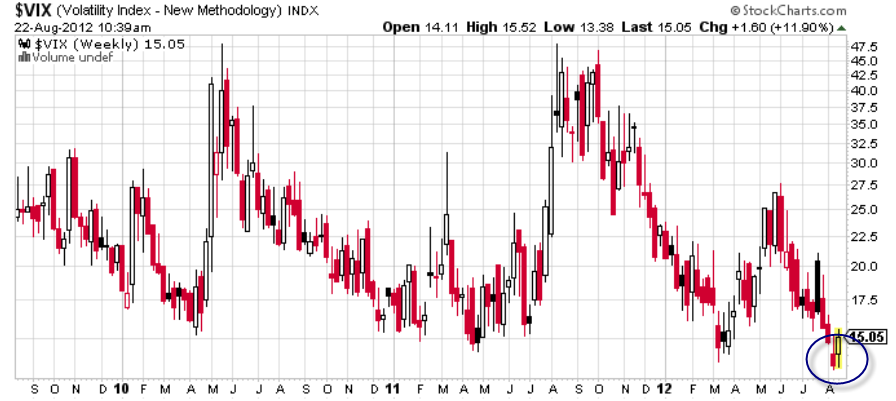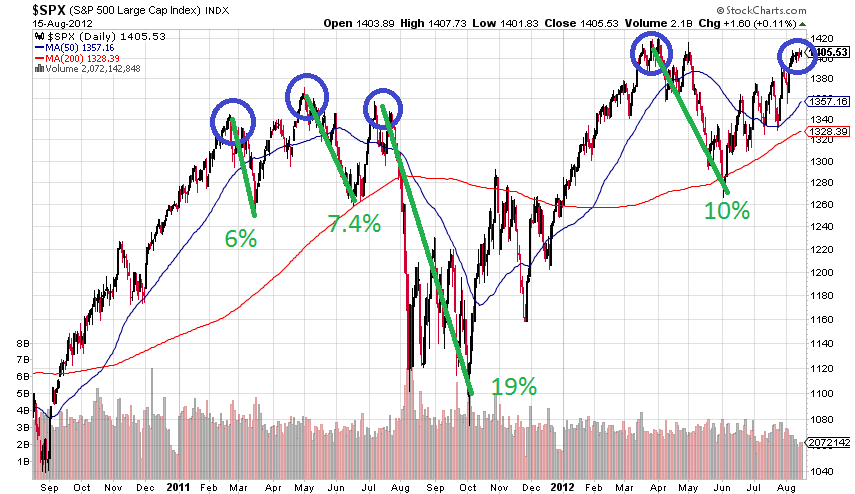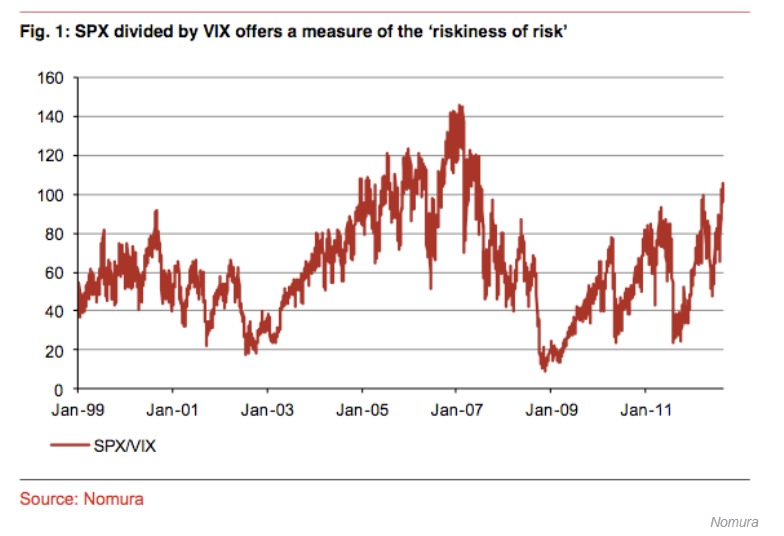by Michael Tarsala
There is a perception that the market is risky right now ahead of U.S. elections, concerns about Europe and China’s economies, and the coming U.S. fiscal cliff.
When it comes down to it, though, investor confidence is arguably at its highest level since 2007. It’s so high that investors may have become too complacent and susceptible to unforeseen market shocks.
If you haven’t guessed, I am talking about the CBOE Volatility Index, — the VIX. It’ is by far the most talked about market fear gauge. It’s being cited all the more in recent weeks, as it’s now at its lowest level in years.

Source: Stockcharts.com
The VIX is a rare stock market gauge in that it is forward looking. It tracks the options prices that investors are willing to pay as protection on the stocks that they own. As a result, it provides a 30-day risk forecast for the S&P 500’s price volatility.
It generally moves in the opposite direction of stocks. A historically low VIX says that protection is cheap because it’s simply not in demand. A historically high VIX says that protection is expensive, as investors are clamoring for it.
Right now, there is extremely low demand for protection heading into September, which is typically the most volatile month of the year.
Low volatility is a good thing, right?
Not necessarily.
You’ve probably heard of the market “climbing the wall of worry,” right? The one factor that helps drive stocks over that wall perhaps more than anything else is declining market fear from a high level. The slow burnoff of volatility (fear) acts as fuel that helps the market power to the top.
Yet when there is no wall of worry — as is the case now — there is simply nothing for the market to climb. No big movements are expected. It can leave the market stranded at a high point. The low fear level can leave markets susceptible to unforeseen shocks that can send the benchmark S&P 500 lower.
A new “wall” slowly begins to build again.
That has not happened yet, but it could soon.
Here’s the chart that makes the case:

Source: Market Tech Reports
The blue circles mark VIX levels similar to the current one – and all four of the past ones led to either minor or major declines.
Analysts at Nomura also have their own take on the low VIX.
They have taken the S&P 500 divided by the VIX, as a confidence measure that seeks to measure both investor optimism and complacency.
S
Source: Business Insider
By that measure, the confidence level is now greater than it was at the 2000 market highs, and lower only than it was approaching and just after the peak in 2007.
Are you prepared for the potential for more market volatility going forward?
Talk to us at Covestor, and we can help you find strategies tailored to your goals, and even help you find investment models that have beaten the market with less volatility than the S&P 500.
If you would like to learn more, call us at 866-825-3005, X 703 in our New York office.
Invest with us, and your money is held in a top-tier brokerage account bearing your name, separate from everyone else’s money. It’s not sloshing around in a big pool run by us or some third party, and there is no one earning interest on it.
It’s your own account; you can see the balance change on a daily basis, make investment changes extremely quickly, and add to or pull your money at your complete discretion.



